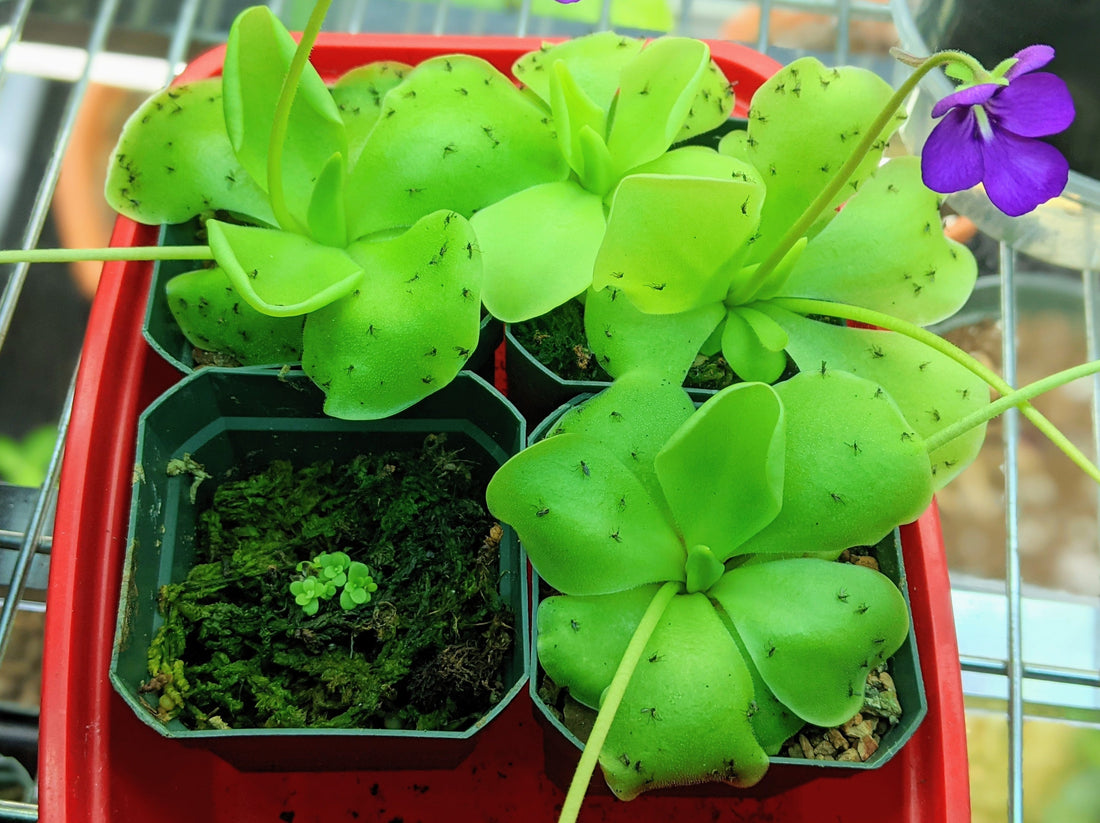Fungus gnats are a common nuisance for houseplant lovers. These tiny flying pests lay eggs in moist soil, and their larvae feed on organic matter—and sometimes plant roots. While chemical insecticides can work, many gardeners prefer natural solutions.
In this guide, I’ll share my chemical-free method using hot water to kill gnat larvae without harming plants. I’ll also cover additional techniques like hydrogen peroxide soaks, vacuuming adults, and preventive measures—including carnivorous plants like butterworts (Pinguicula), which act as living sticky traps.
Why Hot Water Works Against Gnats
Fungus gnat larvae thrive in damp soil but can’t survive high temperatures. Water at 50°C (122°F) is hot enough to kill larvae but not so hot that it damages plant roots.
How to Tell If You Have Gnat Larvae
Before treating, check for signs:
✔ Slimy, shiny film on soil – Indicates larvae activity.
✔ Tiny white worms in soil – Visible when disturbing the top layer.
✔ Adult gnats flying around – A sign of an active infestation.
Step-by-Step: Killing Gnats with Hot Water
1. Hot Water Soil Drench
- Use tap water at 50°C (122°F) – Hot enough to kill larvae but safe for roots.
- Slowly pour over soil until saturated.
- Repeat every 4-5 days to break the life cycle.
2. Soak Pots in Water (For Severe Infestations)
- Submerge the entire pot in a bucket of room-temperature water for 15-20 minutes.
- Larvae will float to the surface—discard the water afterward.
3. Hydrogen Peroxide Boost (Optional)
- Mix 1 part 3% hydrogen peroxide with 4 parts water.
- Water the soil—this kills larvae and aerates roots.

Bonus: Natural Gnat Traps
1. Vacuuming Adult Gnats
- Use a handheld vacuum on the lowest setting.
- Gently suck up flying adults to reduce egg-laying.
- Empty the vacuum immediately to prevent escape.
2. Butterworts (Pinguicula) – Nature’s Sticky Trap
- These carnivorous plants have sticky leaves that trap and digest gnats.
- Place near infested plants for passive pest control.
- Thrives in bright, indirect light and moist soil—perfect for humid plant areas!

Preventing Future Gnat Infestations
✔ Let soil dry between waterings – Gnats thrive in damp conditions.
✔ Use yellow sticky traps – Catches adult gnats.
✔ Add a sand or gravel top layer – Blocks larvae from emerging.
✔ Avoid over-fertilizing – Excess organic matter attracts gnats.
✔ Introduce butterworts or other carnivorous plants – A decorative, long-term solution.
When to Use a Backup Solution (BTK Insecticide)
If natural methods aren’t enough, Safer’s BTK (Bacillus thuringiensis var. israelensis) is an organic, bacteria-based larvicide that targets gnats without chemicals.

Final Thoughts
Hot water, hydrogen peroxide, vacuuming, and butterworts are effective, chemical-free ways to eliminate gnats. By combining these methods with proper watering habits, you can keep your plants gnat-free for good!
Have you tried butterworts or hot water for gnats? Share your experience in the comments!

